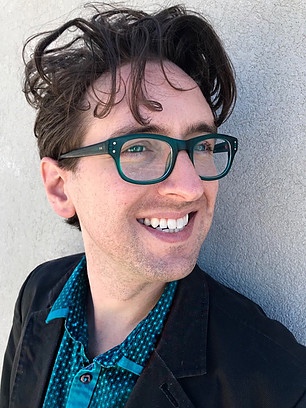Takeaway
Infection-related epidemics, like AIDS and COVID, teach us much about caring. To provide humanistic care, clinicians must continuously endeavor to assess and build trust with patients.

Lifelong Learning in Clinical Excellence | January 9, 2024 | 3 min read
By Matthew Kelly, PhD, MPH, Johns Hopkins Medicine
The boxes were coated in dust, a quarter century of NYC history layered like geological strata marking the passage of time. Every few seconds, my host would emerge from a corner closet. “This is a good one,” he’d say before plopping a box at my feet.
“What in the world am I doing here?” I thought to myself. I was a PhD student who had set out to conduct research in the history of medicine. Surely, I thought, that meant sifting through curated archives in the oak-paneled and air-conditioned reading rooms of august libraries. And yet there I was, perched precariously on the edge of the bed, the only seat available in his tiny East Harlem studio apartment.
But then I opened the boxes. And in an instant, every discomfort evaporated. For I was face to face with a collection of archives that was eye-opening and unsettling, a history of AIDS seldom discussed. It was the uncollated archives of HEAL, one of New York City’s earliest AIDS activist groups, a largely forgotten grassroots organization focused on exploring alternative responses to the pandemic. They were the archives of dissent.
In those boxes, I found articles entitled “Racist Medical Genocide: Murderous Iatrogenic AIDS Deception,” with illustrations of skeletons wearing stethoscopes and looming over tombstones marked “Good Patients.” I found letters from prisoners who, after visits from the group’s members, were convinced to discontinue their AZT. And I found countless handouts and newsletters with the same three emboldened words printed on their covers: “FIRE YOUR DOCTOR.”
I spent a decade studying expressions of distrust and dissidence in the AIDS pandemic. On several occasions, people questioned my area of focus. Surely, they offered, little benefit could be gleaned from studying the history of individuals whose expressions of distrust seemed anachronistic and fringe.
And then came COVID. Like strata of dust disrupted by the wind, all that was anachronistic and quaint became critically relevant. Throughout the world, people eschewed masking guidelines, rejected vaccines, and pursued untested treatments. In short, huge segments of society had fired their doctors.
My research culminated in a book, “The Sounds of Furious Living” (Rutgers University Press, 2023). In it, I document the history of unorthodox responses to medical professionals. I also reflect on this history’s relevance to the COVID pandemic. Below, I summarize several broad lessons from history that may inform clinical practice:
1. It’s not only about science.
People construct meaning from many sources, including science, religion, and family practice. If we respond to distrust with only scientific information, we might not only miss the point, but further alienate patients.
2. Distrust is not a “left” or “right” issue.
Distrust in medicine may be one of the few topics that unites the left and right of the American political spectrum. Projecting left versus right language onto it may undermine understanding and empathy.
3. Trust is not a binary.
Though we often speak of people as being “pro” or “anti” science, this is misleading. For most people, trust exists on a spectrum and is situational and mutable. To provide humanistic care, clinicians must continuously endeavor to assess and build trust.
4. Empowerment is uncomfortable.
We often speak of the importance of empowering patients. Sometimes people who are vocal in their opposition to medicine are among the most engaged. Clinicians must work to educate patients when their information is incorrect. But we should recognize that it’s impossible, and likely undesirable, to completely eliminate opposition.
5. Echo chambers are real.
Social media bombards audiences with disempowering disinformation. Clinicians must work to understand the source of patients’ distrust and provide nonjudgmental education to equip them to make informed decisions.
This piece expresses the views solely of the author. It does not necessarily represent the views of any organization, including Johns Hopkins Medicine.

